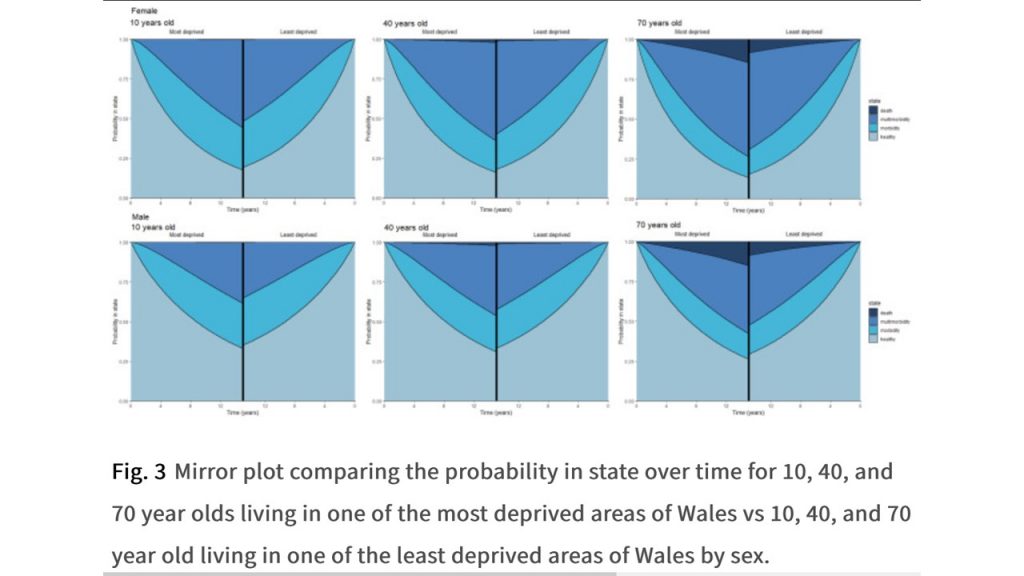Almost all studies irrespective of the methods applied find that health is a matter of related to social inequality. The study by Lyons et al. (2023) in the Lancet demonstrates the same basic findings. This study uses the concept of multimorbidity and time until first and subsequent diagnosis as the measures of health. Mortality between different socioeconomic groups in Wales (UK) is largely confirmed. It is not only men beyond 70 years of age that face this unequal health trajectories, but already in the age group of 10- 20 years old teenagers the time until first diagnosis is different between the poor and wealthy neighbourhoods.
Differential health trajectories have a very early onset and seem to widen throughout the live course. The longitudinal nation-wide study in Wales allows to determine the impact of socioeconomic deprivation on health. The conclusions imply a combination of health and social policies to address health inequality. Clinical practice alone is unlikely to reverse the trends as onset of disease in form of first or subsequent diagnoses start from a very early age onwards in deprived areas.
Health as part of the curriculum in education systems is an obvious conclusion as well. This needs to take preventative approaches more seriously to give children and adolescents a more equal start into adulthood and professional working life. Education systems have to be reformed to become part of the solution rather than creating unhealthy trajectories themselves due to stress and unrealistic, unhealthy goal setting. Walking or cycling to school, more healthy school meals and learning about nutrition as well as processes of metabolism in the body should complement a more active school life-style. The dangers of developing ill health early seem to be greater nowadays than before. That is probably the most worrying news of the study. Sedentary life-styles seem to be a result of deprived neighbourhoods with less areas for comfortable, healthy walking or outdoor exercise.
It is an accumulation of effects due to neighbourhoods, commuting patterns and work-related health risk. Counties within regions grow more distant from each other as well as regions within countries. Youth is well aware of these health and social differentials. Eventually they will claim their “lives” or “equal chances” back again. Sociology has provided many clous to address these issues: Segregation or discrimination of groups of society, gentrification of neighbourhoods, intersectionality of health and social issues, to name just a few.
In order to target at-risk populations better and intervene with prevention rather than curative, we have to integrate social and health approaches much more than we used to do. The way forward is to improve the targeted, preventive approaches in order to improve the equality of chances to education, health and work.
(DOI: LINK to study)


One Reply to “Health inequality”
Comments are closed.